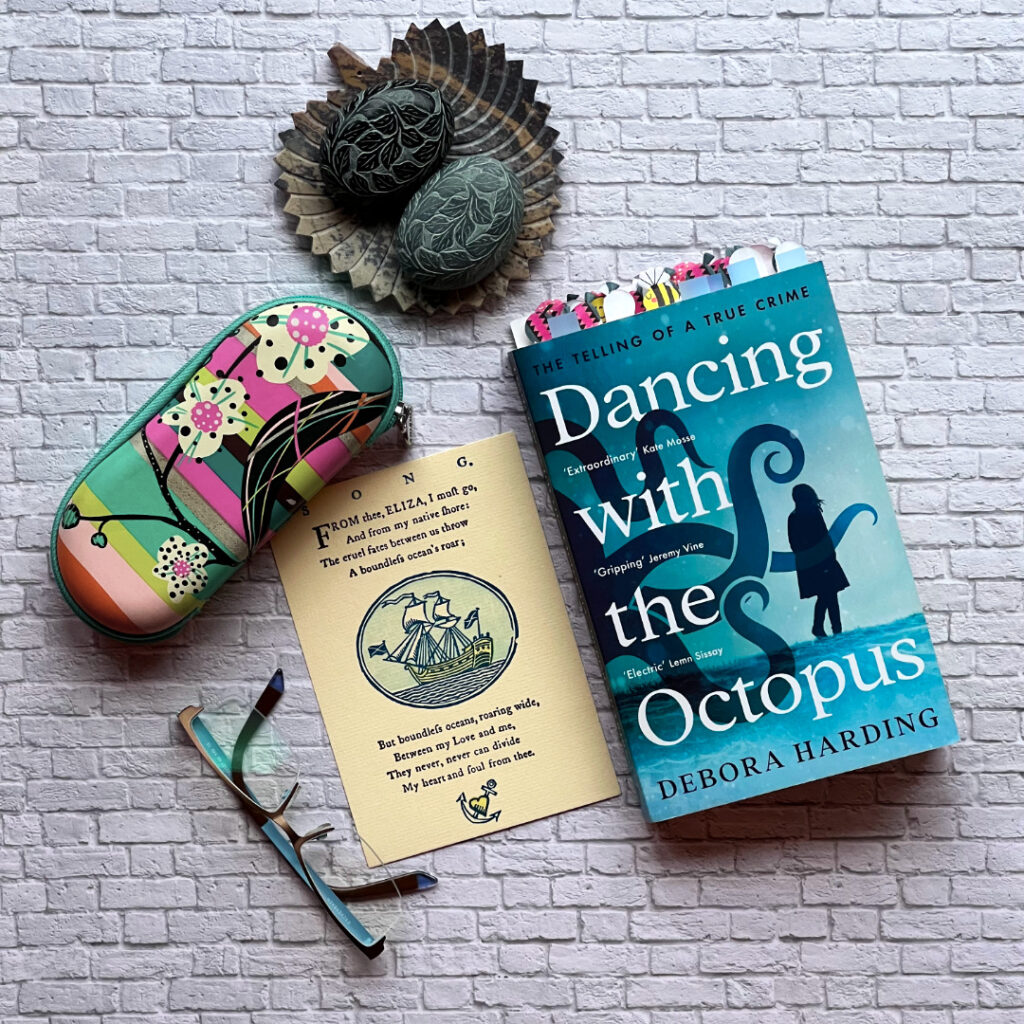
Publication Date: 7th August 2020
Publisher: Profile Books
ISBN: 9781788165174
Genre: True Crime
Strong Point: The story itself. And the way the author presents it is impecable.
Weak Point: Any!
Books on Tour Rating: 



 (5/5)
(5/5)
Goodreads Rating: ⭐️⭐️⭐️⭐️ (3.95/5)
“I will tell you about my childhood. Do not be scared”.
“DANCING WITH THE OCTOPUS: THE TELLING OF A TRUE CRIME”
I think I have said this before but, I find that reviewing a True Crime book is quite complicated. One must take into consideration that what you are reading (and therefore, reviewing or criticising!) is the story of someone else’s suffering and journey towards having some kind of healing or closure.
For this reason alone, I tend to be very careful with my words in order not to offend anyone.
However, this book has made my review very easy, as I don’t have anything at all bad to say about it.
I am deeply amazed, scared, and angry by the story Debora narrates here but in a good way, of course.
Let me explain myself…
THE STORY
In 1978, Debora Harding was a 14 years old teenager living in Omaha, Nebraska.
She lived there with her father, her mother, and her two sisters. All normal, right? Well, it wasn’t so. I will come back to her family life later on.
Unfortunately, one day in that year 1978, Debora was kidnapped, sexually abused and left to die in the cold winter night.
What follows is Debora trying to explain her journey and struggle as a survivor (not a victim) of this horrible experience.
Debora also explains a bit of the story of her family before the incident as well as the background of her attacker, whom she calls Mr. K (for Kidnapper!) although we know the name of the criminal, Charles Goodwin, from the first line of the book.
VARIOUS TIMELINES
Debora unravels the story of “Dancing with the Octopus” narrating it through different timelines.
The first one is in 2003 in Lincoln, when Goodwin is waiting for his parole hearing. The second timeline is in the year 1978, when the aggression happened. And the third one is in the year 1992, when Debora moves to London with her husband-to-be, Tom and she starts to realize something very wrong is happening to her.
Furthermore, as I said, Debora also tries to explain Goodwin’s situation before, during and after he committed the aggression.
It almost sounds for a tiny second as if she tried to justify his crime (as many people do!) by explaining the awful circumstances that surrounded Goodwin: he himself having been sexually abused, suffering from racism, etc. However, as the narration unfolds, it is quite clear it isn’t so.
Nevertheless, his personal situation must be told to the readers in order to understand everything that happened later, and Debora was so amazingly kind to do so for us. It mustn’t have been easy to do so.
THE ICING ON THE CAKE
I don’t want to tell a lot of details about the story, because I prefer the reader knows them as the narration goes on.
However, one thing I must say: apart from the horrible experience lived by Debora, the story of her family got me even more. Debora felt completely abandoned by everyone when her attack happened, including those who should have taken the most care of her.
Debora’s family is very particular (aren’t all families so?. Its dynamics is one of what it is now call a “dysfunctional family”.
Her mother got very young pregnant and it seems she did not want to be a mother so soon. This, together with her many mental problems, made life at the family house a complete nightmare.
Her father, unfortunately, didn’t help. He also had his own share of abuse and mental problems which led to an awful end.
In addition to this, Debora’s relationship with her mother has touched me deep inside. The relationship with my own mother is also not the best. After having struggled with her mental health (and mine) since I was 9, many of Debora’s reflections about her mother, are quite similar to mine. I could never forget, for example, this one sentence: “How I loathed the person I became in her presence”. This is how I feel too.
FINAL THOUGHTS ABOUT “DANCING WITH THE OCTOPUS”
This book is a hard one to read, especially if you are also a survivor of a sexual aggression.
Please, read first the trigger warnings, because there are many!
However, I am very pleased to have read it.
“Dancing with the Octopus” is the story of an incredibly strong and brave woman who had the “ovaries” (not the “balls”!) to face her aggressor and tried to understand why he had done that to her; a woman, who was terrified of treating her own children in the way her mother had treated her and her sisters.
This is the story of a woman who after such an horrendous crime decided this was not gonna mark who she is; a woman who, with the amazing help of her husband Thomas, would try to understand what was happening to her body and mind, in the pursuit of healing, or trying to. For herself, her husband and her own children.
This is a narration of the love of a father towards his daughter, who couldn’t help himself nor his dear child with the abuse she was suffering. And a narration of the love of one daughter for her father, whom she tried to help several times and, in the end, couldn’t.
This is a work which speaks in BIG LETTERS about mental health and how this does not only affect the ill person but those around them with awful consequences.
Ultimately, this is a book about healing; it is a call for action for those struggling with mental problems and do not know how to go out of that dark place. Speak out, seek help.
You are definitely worth it.



